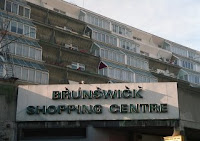1970s BRITISH CULTURE
The School of Creative Arts, Film and Media at University of Portsmouth
have been awarded a large research grant from the Arts and Humanities
Research Council to write the history of British visual culture in the
1970s. This is headed up by Professor Sue Harper. Part of the project is to
run an interdisciplinary conference on the 1970s exploring the relation
between the society of the period and its culture in the broadest sense.
This conference will take place in Portsmouth on
1, 2 and 3 July 2008.
We are looking for papers on the following areas:
Cinema
Video
TV
Avant-Garde practices
Media (radio/magazines/journalism)
Design/graphics/architecture
Literature (novel/poetry)
Fashion
Politics
Theatre/performing arts/dance
Sexual and gender politics
Music
Race/class/national identity
Sub-cultural practices
History of theory
This list is not exhaustive so please forward abstracts for other areas
relating to 1970s culture that are not included.
Please send abstracts of 250 words to:
Peri Bradley – peri.bradley@port.ac.uk
and Professor Sue Harper – sue.harper@port.ac.uk
The deadline for abstracts is 31 January 2008. Please ensure you include
your name, affiliation, email address and a brief biography at the top of
your abstract.
For more information, please visit our website: www.1970sproject.co.uk






